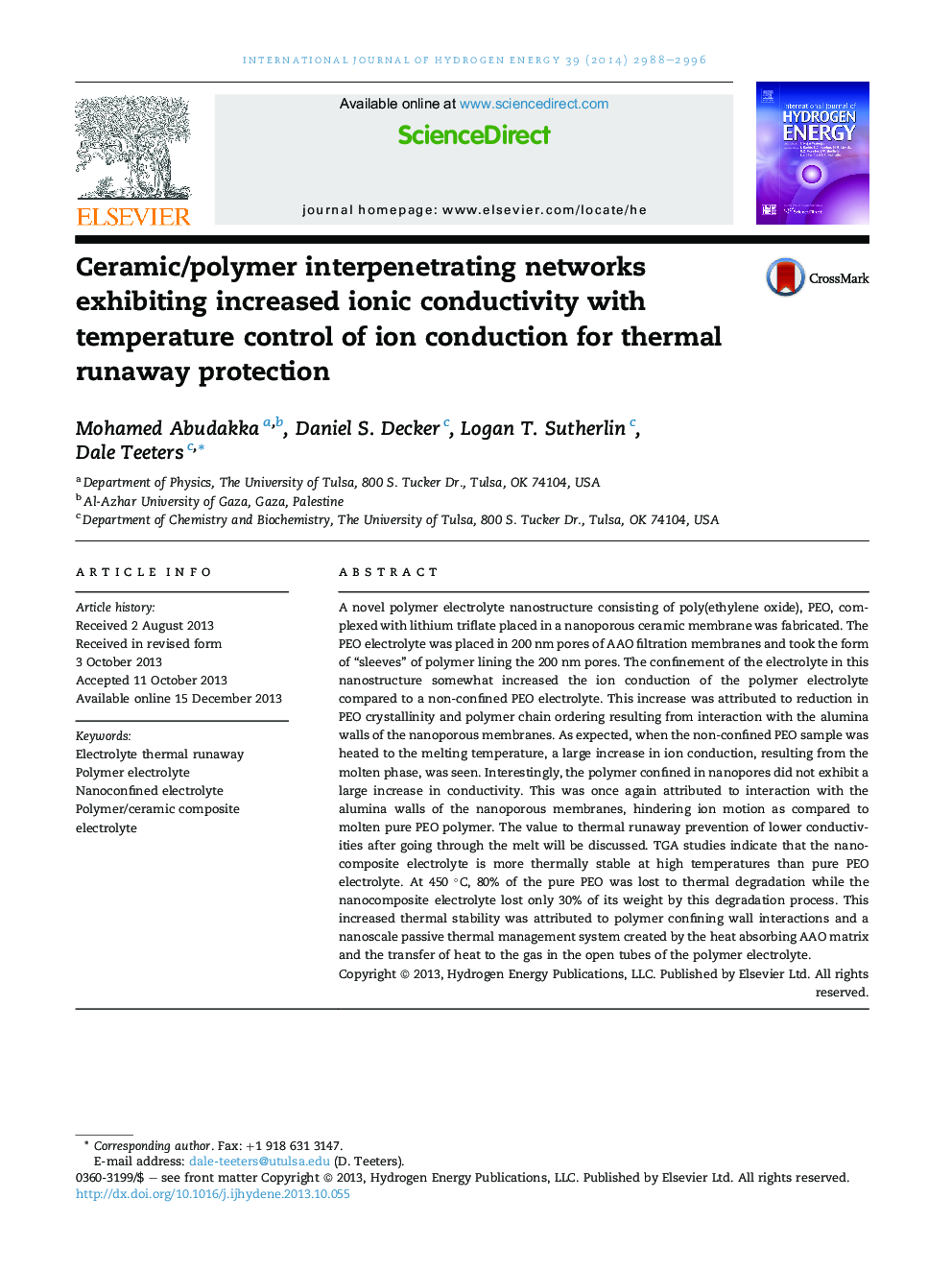| Article ID | Journal | Published Year | Pages | File Type |
|---|---|---|---|---|
| 7720754 | International Journal of Hydrogen Energy | 2014 | 9 Pages |
Abstract
A novel polymer electrolyte nanostructure consisting of poly(ethylene oxide), PEO, complexed with lithium triflate placed in a nanoporous ceramic membrane was fabricated. The PEO electrolyte was placed in 200 nm pores of AAO filtration membranes and took the form of “sleeves” of polymer lining the 200 nm pores. The confinement of the electrolyte in this nanostructure somewhat increased the ion conduction of the polymer electrolyte compared to a non-confined PEO electrolyte. This increase was attributed to reduction in PEO crystallinity and polymer chain ordering resulting from interaction with the alumina walls of the nanoporous membranes. As expected, when the non-confined PEO sample was heated to the melting temperature, a large increase in ion conduction, resulting from the molten phase, was seen. Interestingly, the polymer confined in nanopores did not exhibit a large increase in conductivity. This was once again attributed to interaction with the alumina walls of the nanoporous membranes, hindering ion motion as compared to molten pure PEO polymer. The value to thermal runaway prevention of lower conductivities after going through the melt will be discussed. TGA studies indicate that the nanocomposite electrolyte is more thermally stable at high temperatures than pure PEO electrolyte. At 450 °C, 80% of the pure PEO was lost to thermal degradation while the nanocomposite electrolyte lost only 30% of its weight by this degradation process. This increased thermal stability was attributed to polymer confining wall interactions and a nanoscale passive thermal management system created by the heat absorbing AAO matrix and the transfer of heat to the gas in the open tubes of the polymer electrolyte.
Keywords
Related Topics
Physical Sciences and Engineering
Chemistry
Electrochemistry
Authors
Mohamed Abudakka, Daniel S. Decker, Logan T. Sutherlin, Dale Teeters,
